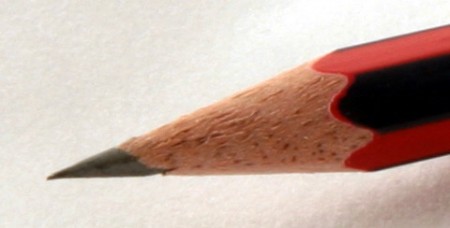India’s artisanal fountain pens
Earlier today the BBC published an article about India’s artisanal fountain pens. You can read the article at https://www.bbc.co.uk/news/world-asia-india-55314701.
India’s artisanal fountain pens Read More »
Earlier today the BBC published an article about India’s artisanal fountain pens. You can read the article at https://www.bbc.co.uk/news/world-asia-india-55314701.
India’s artisanal fountain pens Read More »
Papermate’s Inkjoy gel pens are really nice. Unfortunately it’s very difficult to get the 0.5mm version in the UK. It’s easier to find a really good deal on the 0.7mm version (finding a good deal is something that happened to me three times in the last two years) than to find the fine version at any price (something that has happened to me zero times in the last two years).

When I came across those three good deals I always bought them and every time I ended up with different versions. My oldest Inkjoys, retractable big barrel ones, were Made in Korea, but the later versions I bought, the retractable 300RT and the capped big barrel ones, were Made in India.

They all write great, but the cap of the capped version is a bit loose and less practical than the retractable version.

A quick non-pencil blogpost – this time: Another Original and Copy one.
A bit more than a month ago I bought the Indus from Fountain Pen Revolution (the one on the right in the picture) for $20 including postage.
 I didn’t realise that it is a Pelikan copy. I also ordered the wrong nib by mistake. I guess that’s what’s happening if you order late at night.
I didn’t realise that it is a Pelikan copy. I also ordered the wrong nib by mistake. I guess that’s what’s happening if you order late at night.
Like the Nataraj 621, reviewed at pencil talk, the Reynolds 432 is a pencil from India with a design very similar to the Staedtler tradition. The differences in appearance are minor.

Reynolds:
The history of Reynolds is a bit complicated.
Milton Reynolds from Chicago established the Reynolds pen company in 1945, but the company was later bought by Edmond Regnault who was running a successful pen company in France since 1927. Since 1974 the company was run by Edmond Regnault’s sons until it was sold to investors in 1993.

The company behind the Reynolds 432 pencil, G. M. Pens International Pvt. Ltd., introduced the Reynolds brand to India in 1986 and is the exclusive Licensee of Reynolds, France. Newell Rubbermaid bought Reynolds in 1999/2000, which is now part of Sanford Reynolds SA, and closed the factory in France in 2007, sparking a boycott of products from Reynolds and Newell Rubbermaid.
Today Reynolds India produces all kinds of pens, including two different types of wooden pencils and two different types of mechanical pencils.

The pencil:
Reynold’s website highlights the following features of this pencil, available only in HB
The fact that there are paws printed on the 432 and the child safety standards mentioned on the web site seem to suggest that this pencil is aimed at children, but the “conservative look” of the pencil would suggest otherwise.
The wood used for the Reynolds 432 seems to be the similar to the wood used for the Nataraj 621. In a comment to the Nataraj 621 review at pencil talk Harshad Raveshia identified the wood used for the 621 as Vatta wood (Macaranga Peltata). The wood used for the 432 has a similar appearance, but is not red. Instead I would describe the colour as slightly yellow. It could of course still be the Vatta tree, just coloured differently, or it could be a normal deviation expected for this type of wood.

A few other observations:

Conclusion:
The wood is a bit harder than the wood typically used for pencils in Europe. This might have implications for the blade of your sharpener, but other attributes of the wood, like the texture and appearance are very pleasant. Writing with the Reynolds 432 is fairly smooth and overall this is a very nice pencil.
I would like to thank Sameer Khanna who agreed to swap the Reynolds 432 and the Nataraj 621 for two Staedtler Noris pencils.